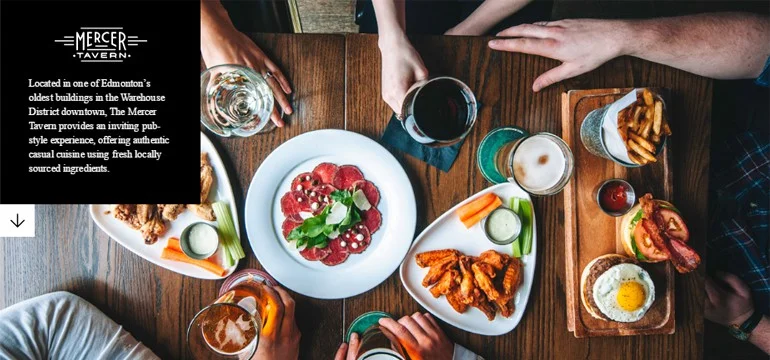You must have come across the term “information age” many times. What this really means is that we are no longer satisfied with just the first product or service that we stumble upon. The consumer culture of today is based on accessing and comparing information to arrive at an optimum decision. The internet has not only brought about this age but is constantly fueling its progress as well. The industry most affected by this technological overhaul is the restaurant business. Each one of us can testify this by simply remembering the last time we “checked in” on Facebook when entering a restaurant, ordered food from a nearby joint at home or left a good or bad review of a restaurant online. Restaurant websites are becoming an essential tool to ride this wave of an information-centric smart consumer.
These web pages are the new shopping and ordering windows and there is no running away from this fact. As per the recent research, 56% of guests use a website to order online. A restaurant website is no longer an option to be considered in this tech-savvy world. It is a necessity. Period. However, just like every necessity, there will be a lot of people doing it just for the sake of it and we should be avoiding this ad hoc approach at all costs.
A restaurant business, be it a cafe or a bar, needs to understand the importance of this powerful tool in order to reap the benefits it has to offer.
You need to take care of the following factors while building an amazing Restaurant Website:
Content Driven:
One look at the website should answer all the basic questions a customer could have. This includes your menu, contact number, address and offers/discounts if any. It only helps if the menu is updated real-time to reflect the latest cuisines. Do link your restaurant address to Google Maps for ease of location. This will require you to think from the customer’s point of view. Ask the question, ‘What would I be frustrated with if I didn’t find it on a restaurant’s home page?’
Minimalistic Layout:
Even though the content is all in place, the presentation of the website should preferably be minimalistic. Gone are the days with websites roaring with loud brochure designs on their web pages. A sense of design sophistication has been inculcated in the modern-day consumer and a cluttered layout only makes a user uncomfortable or disinterested.

Photo-Centric:
How many times have you ordered a pizza just because it looked delicious? We assign qualities to a product based on what we see. The look is the first attraction which makes professional food photography a must. Get close-ups of your most colourful dishes since they seem to appeal more to the eye. Pictures are zoomed in to convey a visitor how the dish would look on their dinner table.
High-resolution photos of the restaurant venue also work wonders since a good amount of motivation to visit a restaurant is the ambience. Capturing an environment which looks welcoming to the visitors will convert your online clicks to actual footfalls. Make sure to not have intense lighting as guests prefer a relaxing ambience to spend some time in.
Mobile-Friendly:
A market survey by Netwaiter revealed that 83% of smartphone owners surveyed use their phones to determine where to eat while travelling. The website should be built to support various platforms like desktops, smartphones and tablets. Millennials are increasingly getting used to ordering everything online on their cell phones owing to the accessibility and ease of use.
Interactive:
Creating a throbbing online presence is a two-way street. Encourage customers to leave feedback and post some of the testimonials on the home page. A contact form should be built into the website to ensure the online guests feel welcome to participate in your venture.
A well-designed website is like a red carpet rolled over at the entrance to make a guest feel special.
Linking Social Media:
In an interview to Restaurant India, Managing Director of Moti Mahal Delux, Monish Gujral, revealed that 10-15% of sales depend on social media. It only makes perfect business sense to have a presence where people spend most of their recreational time on social media. Be it Facebook, Twitter or Instagram, for a restaurateur these are all avenues to increase visibility and sales.
Advanced Tools:
For creating websites, standard providers like Square Space could come handy. For a meagre cost, you can find templates to use for your online approach. However, we are here talking about how to get an edge over the competition and for that purpose a good restaurant software can be used as a one-stop solution for all your commercial needs. They have services for inventory management, payroll management, analytics and promotions, all managed through one interface.
These steps will make your restaurant the “place to be” soon enough considering the internet’s capacity to explode and go viral. Just remember it is not the creation but the consumption of your website that should be prioritised for best results.






